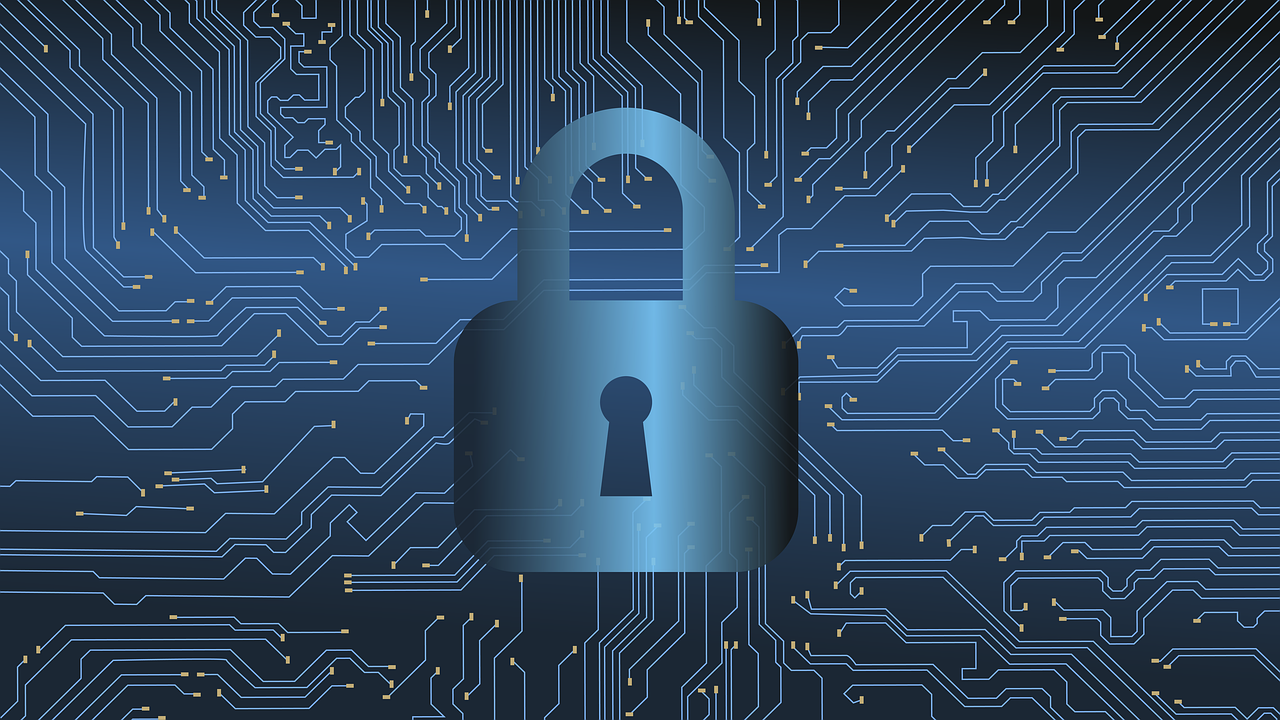In an era defined by technological advancements, the legal industry has not remained untouched. The rise of Legal Tech, powered by artificial intelligence and cutting-edge software, has transformed the way legal professionals work, making their tasks more efficient and streamlined. However, with great technological innovation comes great responsibility. This article delves deep into the world of cybersecurity in the age of Legal Tech, exploring the challenges, strategies, and future prospects of safeguarding sensitive legal information.
The Legal Tech Revolution
Legal Tech is reshaping the legal landscape by bridging the gap between technology and legal services, revolutionizing how legal professionals operate. It marks a profound shift from traditional methods to digital solutions, offering the promise of enhanced efficiency and accessibility to justice. The Legal Tech ecosystem encompasses a wide spectrum of applications, each tailored to address specific pain points within the legal industry.
One notable area of transformation is e-discovery, where Legal Tech leverages advanced algorithms and data analytics to sift through mountains of digital evidence efficiently. This has significantly reduced the time and effort required for litigation support, enabling lawyers to focus on strategic aspects of their cases. Moreover, Legal Tech has breathed new life into contract analysis, making it possible to scrutinize lengthy and complex agreements swiftly. By automating the review process and highlighting critical clauses, lawyers can avoid costly oversights and streamline negotiations.
Another facet of the Legal Tech revolution is the emergence of online legal marketplaces. These platforms facilitate convenient access to legal services, empowering individuals and businesses to find lawyers, notaries, and other legal professionals quickly. By leveraging technology, these marketplaces reduce the barriers to entry, democratizing legal assistance in a way previously unimaginable. They also promote transparency by providing clients with a clear understanding of legal fees and services upfront, fostering trust in an industry historically associated with opacity.

The Growth of AI in Legal Tech
Artificial Intelligence, often referred to as AI, stands as the catalyst behind the profound transformations witnessed in Legal Tech. Machine learning algorithms, natural language processing (NLP), and predictive analytics have become indispensable tools in the legal professional’s toolkit. These technologies, collectively known as AI, enable the efficient processing of vast volumes of legal data, unlocking valuable insights and facilitating data-driven decision-making.
Document review, once a labor-intensive and time-consuming task, has been revolutionized by AI. Advanced machine learning algorithms can now sift through millions of documents, identifying relevant information with impressive accuracy. This not only expedites the discovery process but also reduces the potential for human error, enhancing the overall quality of legal work. Legal research, another cornerstone of legal practice, has also been profoundly impacted by AI. With access to powerful search engines and AI-driven databases, lawyers can now access relevant case law, statutes, and legal literature in a matter of seconds, significantly reducing the time spent on research and improving the accuracy of their legal arguments.
Contract management, a critical function in law firms and corporate legal departments, has experienced a paradigm shift thanks to AI. Machine learning models can analyze contracts for key terms, clauses, and potential risks. This not only accelerates the review process but also allows organizations to proactively manage their contractual obligations and mitigate legal risks. AI’s ability to predict legal outcomes based on historical case data has further amplified its significance. By analyzing patterns and precedents, AI can provide lawyers with valuable insights into the potential outcomes of their cases, enabling them to make more informed decisions and devise winning strategies. As AI continues to evolve, its role in Legal Tech is poised to grow, offering ever-expanding possibilities for legal professionals seeking to enhance their practice and better serve their clients.
The Value of Legal Data
Legal professionals are entrusted with a trove of highly sensitive and confidential information on a daily basis. This data encompasses a wide spectrum of critical elements, including client records, case details, financial information, and intellectual property. The intrinsic value of this data cannot be overstated, as it represents the lifeblood of the legal industry. It is the foundation upon which legal cases are built, strategies are formulated, and justice is sought.
Client records contain a wealth of personal and often financially sensitive information. From social security numbers to financial statements, this data is a goldmine for cybercriminals looking to commit identity theft or financial fraud. Case details, on the other hand, encapsulate the strategies, evidence, and arguments that can make or break a case. Leaking this information could not only compromise a client’s interests but also tip off opposing parties, potentially undermining the entire legal process.
Financial information within legal documents can reveal intricate financial structures, transactions, and assets. Cybercriminals with knowledge of these details could engage in financial crimes, including embezzlement or insider trading, with devastating consequences for both clients and law firms. Lastly, intellectual property, such as patents, trademarks, and copyrights, often represent significant assets. Breaches involving this category of data can lead to the theft of valuable innovations or creative works, causing substantial financial losses and damage to a firm’s reputation. Given the immense value and potential consequences tied to legal data, it is no surprise that the legal industry is considered a prime target for cyberattacks.
Threat Landscape in Legal Tech
Phishing Attacks
Phishing attacks have evolved into a formidable threat within the legal sector. Cybercriminals behind these attacks employ increasingly sophisticated tactics to manipulate legal professionals into divulging sensitive information or downloading malware. In many cases, these criminals impersonate law firms, crafting emails that appear remarkably authentic, often mimicking the branding, signatures, and language used by the targeted firm.
These phishing emails typically contain seemingly legitimate requests or urgent matters, aiming to elicit a rapid response from their targets. They may pose as clients seeking immediate assistance or as colleagues sharing confidential documents. The goal is to exploit trust, catch legal professionals off guard, and prompt them to disclose sensitive information such as login credentials, financial data, or client details. Once the attackers gain access, they can exploit this information for various malicious purposes, including identity theft, financial fraud, or even further infiltration into the organization’s systems.
Ransomware Attacks
Ransomware attacks have become a menacing specter in the Legal Tech landscape, posing dire consequences for firms ill-prepared to defend against them. These attacks involve cybercriminals encrypting critical data and demanding a ransom in exchange for the decryption keys. Law firms, often reliant on timely access to legal documents, case records, and client information, are particularly vulnerable to these types of attacks.
Ransomware attacks can bring legal operations to a grinding halt, disrupting case proceedings and potentially causing substantial financial losses due to downtime. Moreover, the reputation damage resulting from a ransomware incident can be severe, eroding trust among clients who entrust their sensitive data to law firms. Firms must not only invest in robust cybersecurity measures but also formulate comprehensive incident response plans to mitigate the impact of potential ransomware attacks and avoid falling victim to cyber extortion.
Insider Threats
Insider threats loom as a significant concern in the legal sector, as employees or associates with access to sensitive data can pose serious risks to security. These threats can manifest in both intentional and inadvertent forms. In some instances, disgruntled employees may intentionally leak confidential information or collaborate with external malicious actors. Such actions can lead to data breaches, legal malpractice, and reputational harm to the firm.
Inadvertent insider threats, on the other hand, often result from human error or negligence. Employees may accidentally send sensitive information to the wrong recipient or inadvertently install malware by clicking on a malicious link. These scenarios underscore the importance of ongoing employee training and cybersecurity awareness programs within law firms. Ensuring that staff members are well-versed in recognizing potential threats and adhering to security best practices is crucial for mitigating the risks associated with insider threats in the legal industry.

Compliance and Regulatory Challenges
The legal industry is subject to a myriad of regulations and compliance standards. Ensuring that Legal Tech solutions meet these standards is a complex endeavor. Failure to comply can lead to hefty fines and reputational damage.
A Multilayered Approach
To establish a robust cybersecurity framework in the legal industry, organizations must start by fortifying their network’s perimeter. Implementing state-of-the-art perimeter security measures is paramount in shielding sensitive data from external threats. This involves deploying advanced firewalls that monitor and filter incoming and outgoing network traffic, as well as intrusion detection systems that can swiftly identify and respond to suspicious activities. Secure virtual private networks (VPNs) serve as an additional layer of defense by encrypting data as it travels between remote devices and the network, safeguarding against interception by malicious actors. By combining these elements, law firms create a formidable barrier against external threats, ensuring that only authorized and secure connections gain access to their network resources.
Endpoint Security
Securing all devices connected to the network is a fundamental pillar of cybersecurity in Legal Tech. Legal professionals rely on a variety of devices, including laptops, smartphones, and tablets, to carry out their duties. These endpoints serve as critical touchpoints between the digital world and sensitive legal data, making them prime targets for cyberattacks. To mitigate risks, law firms must implement comprehensive endpoint security solutions. This includes deploying endpoint security software equipped with real-time threat detection and prevention capabilities. Encryption, both at rest and in transit, is vital to ensure that data remains safeguarded even if an endpoint is compromised. By establishing strict endpoint security protocols and ensuring all devices are regularly updated and patched, law firms can significantly reduce their vulnerability to cyber threats.
Employee Training
While technology plays a crucial role in cybersecurity, the human element remains a vital factor. Legal professionals and staff must be well-versed in cybersecurity best practices to fortify the overall defense posture of the organization. Comprehensive employee training programs are essential in educating personnel about the evolving landscape of cyber threats. Legal professionals should be made aware of the dangers of phishing attacks and equipped with the skills to recognize and report suspicious emails. Emphasis should also be placed on the importance of strong, unique passwords and multi-factor authentication to prevent unauthorized access. Furthermore, staff should be educated on the risks associated with downloading unverified software or clicking on unfamiliar links, as these actions can introduce malware and compromise the network’s security. By instilling a cybersecurity-conscious culture within the organization, law firms empower their teams to become active defenders against cyber threats.
Data Encryption and Access Control
Data Encryption
Protecting sensitive data in transit and at rest is a critical aspect of Legal Tech cybersecurity. To achieve this, law firms should implement end-to-end encryption mechanisms. This means that data is encrypted from the moment it leaves the sender’s device until it reaches its intended recipient. Even if intercepted by malicious actors during transmission, encrypted data remains unreadable without the corresponding decryption key. This ensures that confidential legal documents, client communications, and case-related information remain confidential and secure. Employing robust encryption standards is a proactive measure that adds an additional layer of protection to the legal data ecosystem.
Access Control
Restricting access to sensitive information is paramount in preventing unauthorized breaches. Law firms should adopt role-based access controls (RBAC) to determine who within the organization has permission to view or modify critical data. RBAC ensures that only authorized personnel can access specific resources based on their roles and responsibilities. Additionally, access control measures should include strong authentication mechanisms, such as biometrics or multi-factor authentication (MFA), to verify the identity of users attempting to access sensitive data. By enforcing rigorous access control measures, law firms reduce the risk of data breaches resulting from internal threats or unauthorized external access, thereby safeguarding the confidentiality and integrity of their legal data.
Regular Vulnerability Assessments
A proactive approach to cybersecurity in the legal sector involves conducting regular vulnerability assessments and penetration testing. These assessments are essential in identifying and addressing security weaknesses before malicious actors can exploit them. By regularly scanning the network and systems for vulnerabilities, law firms can stay ahead of potential threats. Penetration testing, on the other hand, simulates real-world cyberattacks to assess the effectiveness of existing security measures. By proactively addressing vulnerabilities and fortifying their defenses, legal organizations can maintain a robust cybersecurity posture and reduce the likelihood of successful cyberattacks.
Incident Response Plan
Preparing for cybersecurity incidents is a fundamental element of Legal Tech security. Developing a comprehensive incident response plan is crucial for swiftly and effectively mitigating the impact of security breaches. This plan should outline clear procedures for identifying, containing, eradicating, and recovering from security incidents. It should also designate key personnel responsible for each phase of the response, ensuring a coordinated and efficient reaction to threats. Additionally, legal organizations should establish communication protocols for notifying relevant stakeholders, including clients and regulatory authorities, in the event of a data breach. By having a well-defined incident response plan in place, law firms can minimize damage, reduce downtime, and swiftly recover from cybersecurity incidents, bolstering their resilience against the ever-evolving landscape of cyber threats.
The Future of Cybersecurity in Legal Tech
AI-Powered Security
As AI continues to advance, it will play an even more significant role in cybersecurity. AI-driven threat detection systems can analyze vast amounts of data in real-time, identifying potential threats with high accuracy.
Blockchain Technology
Blockchain technology, known for its immutability and transparency, could become a game-changer in legal data security. Smart contracts and decentralized storage solutions can enhance data integrity and reduce the risk of tampering.
Quantum Computing Threats and Solutions
The advent of quantum computing presents both opportunities and challenges for cybersecurity. While quantum computers may break traditional encryption methods, quantum-resistant encryption is being developed to counter this threat.

Conclusion
In the age of Legal Tech, cybersecurity is not an option but a necessity. The legal industry’s reliance on sensitive data and AI-driven solutions demands a robust and proactive approach to security. By understanding the evolving threat landscape, implementing comprehensive security measures, and staying abreast of emerging technologies, legal professionals can safeguard their clients’ interests and uphold the trust placed in them. As the legal tech landscape continues to evolve, so too must its cybersecurity defenses, ensuring that justice remains not only accessible but secure in the digital age.

